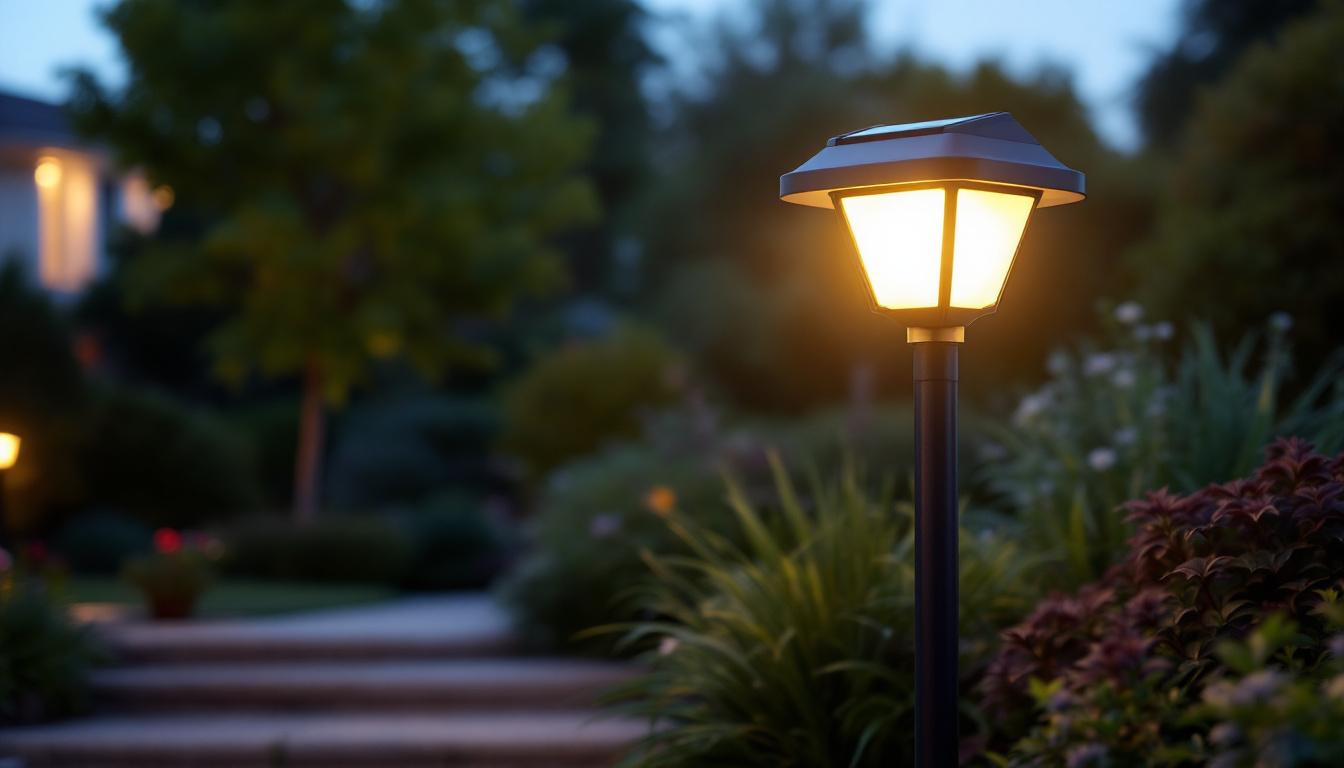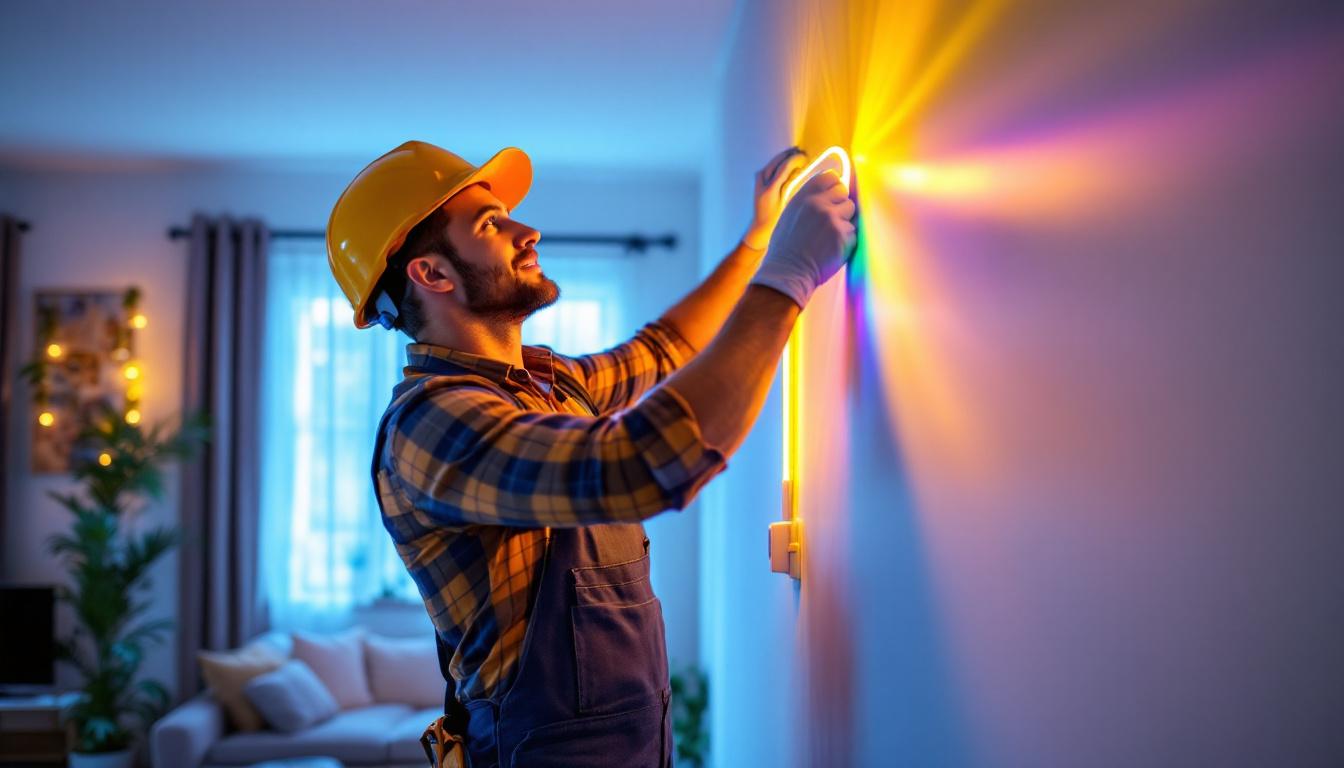
In the ever-evolving world of lighting technology, light sensor light switches have emerged as a popular choice among homeowners and businesses alike. These innovative devices not only enhance convenience but also contribute to energy efficiency. For lighting contractors, understanding the intricacies of these switches is essential for providing clients with the best solutions tailored to their needs. This article will delve into the workings, benefits, installation considerations, and troubleshooting of light sensor light switches, ensuring that contractors are well-equipped to handle this technology.
Light sensor light switches, often referred to as photocells or daylight sensors, automatically turn lights on or off based on the ambient light levels in a space. These devices are particularly useful in areas where natural light fluctuates throughout the day, such as outdoor spaces, garages, and certain commercial environments. By utilizing these sensors, property owners can ensure that their lighting systems are both efficient and responsive to their surroundings, enhancing both functionality and comfort.
At the core of a light sensor switch is a photodetector that measures the intensity of light in its environment. When the ambient light falls below a predetermined threshold, the switch activates, turning on the connected lighting. Conversely, when the light levels rise above the threshold, the switch deactivates, turning off the lights. This automatic adjustment not only provides convenience but also helps in reducing energy consumption. The technology behind these sensors has advanced significantly, allowing for quicker response times and more precise light level detection, making them an increasingly popular choice in modern lighting solutions.
Most light sensor switches come with adjustable sensitivity settings, allowing contractors to customize the threshold according to the specific needs of the installation site. This feature is particularly beneficial in environments with varying light conditions, ensuring that lights operate optimally without unnecessary activation. Additionally, some models include timers that can be set to keep lights on for a specified duration after activation, providing further control and customization for users.
There are primarily two types of light sensor switches: passive infrared (PIR) sensors and photoelectric sensors. Understanding the differences between these types is crucial for contractors when recommending solutions to clients. PIR sensors detect motion and changes in heat, making them ideal for security lighting and areas with unpredictable foot traffic. They are particularly effective in detecting the presence of people or animals, ensuring that lights are activated only when necessary, which can be a critical feature for safety and security.
On the other hand, photoelectric sensors are designed to respond solely to light levels, making them perfect for applications where consistent light control is required, such as street lighting or outdoor fixtures. These sensors can be calibrated to respond to specific light levels, ensuring that they activate and deactivate at the right times, which is especially important in areas where ambient light can be influenced by nearby structures or vegetation. This adaptability makes photoelectric sensors a preferred choice for many outdoor lighting applications.
Light sensor light switches are versatile and can be applied in various settings. Common applications include:
The benefits of using light sensor switches extend beyond convenience. They play a significant role in energy efficiency, reducing electricity costs by ensuring lights are only active when needed. Additionally, they enhance the lifespan of light bulbs by minimizing unnecessary usage, contributing to a more sustainable approach to lighting. Furthermore, the integration of light sensors can lead to improved safety in outdoor environments, as they ensure that pathways and entrances are well-lit during low-light conditions, reducing the risk of accidents.
Moreover, the implementation of light sensor switches can also contribute to a building’s overall smart technology ecosystem. As more homeowners and businesses adopt smart home solutions, integrating light sensors with other smart devices can create a seamless experience. For instance, these sensors can be programmed to work in conjunction with smart thermostats or security systems, providing a comprehensive approach to energy management and security. This interconnectedness not only enhances user convenience but also promotes a more efficient use of resources, aligning with contemporary sustainability goals.
Installing light sensor light switches requires careful planning and consideration. While many of these devices are designed for easy installation, contractors should be aware of several factors to ensure a successful setup.
One of the most critical aspects of installation is the placement of the light sensor. The sensor should be positioned where it can accurately detect ambient light levels without obstructions. For outdoor applications, this may mean avoiding areas shaded by trees or buildings. For indoor installations, placing the sensor away from direct sunlight or artificial light sources will yield better results.
Contractors should also consider the height at which the sensor is mounted. Generally, mounting the sensor at a height of 6 to 8 feet is optimal for most applications, as this height allows for effective light detection while minimizing interference from nearby objects.
When installing a light sensor switch, compatibility with existing wiring is crucial. Most light sensor switches are designed to work with standard electrical systems, but it’s essential to verify voltage requirements and ensure that the switch is compatible with the type of lighting being used, whether LED, incandescent, or fluorescent.
Additionally, contractors should follow local electrical codes and regulations during installation. This may involve securing permits or adhering to specific wiring practices to ensure safety and compliance.
Once installed, calibrating the light sensor is a necessary step to ensure optimal performance. Many switches come with adjustable settings for sensitivity and delay, allowing contractors to fine-tune the device according to the specific lighting conditions of the installation site. Testing the sensor after installation is also vital to confirm that it responds correctly to changes in ambient light levels.
While light sensor light switches are generally reliable, issues can arise that may require troubleshooting. Being aware of common problems and their solutions can save contractors time and enhance customer satisfaction.
If a light sensor switch fails to activate, the first step is to check the ambient light levels. If the surrounding area is too bright, the sensor may not detect the need for illumination. Adjusting the sensitivity settings can often resolve this issue.
Additionally, contractors should inspect the wiring connections to ensure they are secure and free from damage. A loose or frayed wire can prevent the sensor from functioning correctly.
Another common issue is when the lights remain on or off despite changes in ambient light. This can result from a malfunctioning sensor or incorrect calibration. In such cases, recalibrating the sensor or replacing it may be necessary.
It’s also important to consider environmental factors that may affect sensor performance, such as nearby reflective surfaces that could mislead the sensor into thinking the light levels are higher or lower than they actually are.
In some instances, external light sources can interfere with the operation of light sensor switches. For example, streetlights or headlights from passing vehicles may cause the sensor to activate or deactivate unexpectedly. To mitigate this, contractors should evaluate the installation site and adjust the sensor’s placement or sensitivity settings accordingly.
As technology continues to evolve, light sensor switches are becoming increasingly sophisticated. Emerging trends indicate a shift towards smart lighting systems that integrate with home automation technologies. This integration allows for enhanced control and customization, enabling users to manage their lighting through mobile apps or voice commands.
The future of light sensor switches lies in their ability to communicate with other smart devices within a home. This integration can lead to more efficient energy management, as lighting can be adjusted based on occupancy, time of day, or even weather conditions.
Contractors should stay informed about the latest smart home technologies and consider recommending compatible light sensor switches to clients looking to enhance their home automation systems. This not only adds value to the installation but also positions contractors as knowledgeable professionals in a rapidly changing market.
Advancements in sensor technology are also paving the way for more accurate and responsive light sensors. Innovations such as machine learning algorithms and improved photodetector materials are enhancing the performance and reliability of these devices.
As these technologies become more prevalent, contractors will need to adapt their skills and knowledge to incorporate new products and solutions into their offerings. Staying abreast of industry trends and advancements will ensure that contractors remain competitive and can provide clients with the best options available.
Light sensor light switches represent a significant advancement in lighting technology, offering convenience, energy efficiency, and enhanced control. For lighting contractors, understanding the mechanics, installation considerations, and troubleshooting techniques associated with these devices is essential for delivering high-quality service to clients.
As the industry continues to evolve, embracing innovations and staying informed about emerging trends will empower contractors to provide cutting-edge solutions that meet the needs of modern consumers. By demystifying light sensor light switches, contractors can enhance their expertise and position themselves as trusted advisors in the realm of lighting solutions.
Ready to elevate your lighting projects with the latest light sensor switches? Look no further than LumenWholesale for all your lighting needs. Our extensive selection of spec-grade lighting products ensures you have access to the best quality at wholesale prices. Say goodbye to middleman markups and hello to hassle-free bulk buying with free shipping. Don’t compromise on quality or value; choose LumenWholesale for Wholesale Lighting at the Best Value and make every installation a shining success.

Explore how attic lighting influences your home’s energy efficiency.

Discover the comprehensive guide to high hat lighting with our ultimate handbook tailored for lighting contractors.

Discover the science powering solar dusk to dawn outdoor lights and how it revolutionizes efficiency for lighting contractors.

Discover essential insights into plug-in LED light strips tailored for lighting contractors.